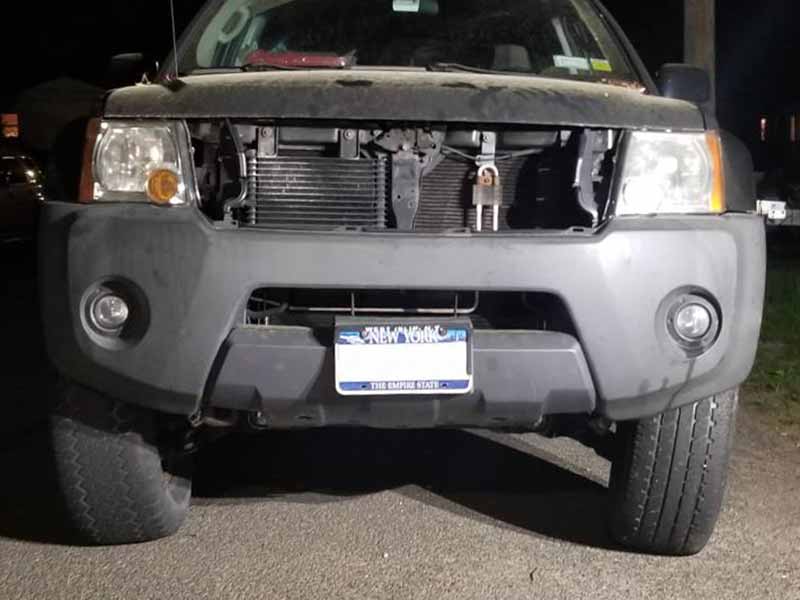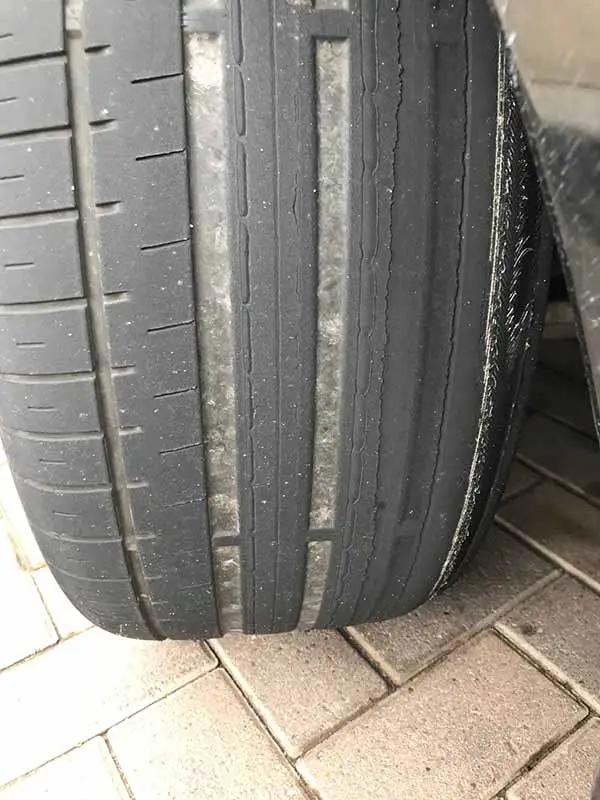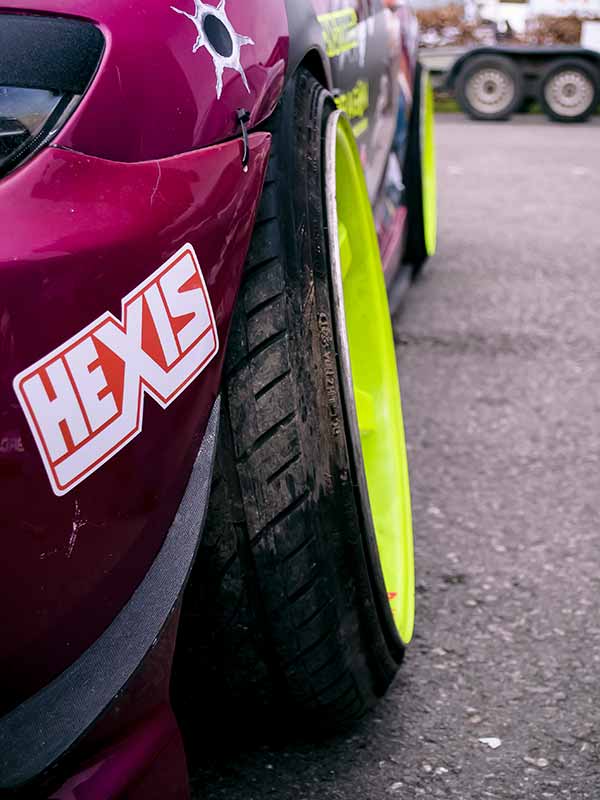Why does camber matter? As one of the measurements of wheel alignment, it can affect a variety of things, such as tire wear, handling, and even safety.
What Is Camber?
Camber is the angle of the wheels relative to the ground when viewed from the front or rear of the vehicle.
It’s measured in degrees, with zero camber meaning the wheels are perfectly vertical and positive or negative camber meaning the wheels are angled either towards or away from the vehicle’s center.
In fact, having the correct camber angle can make a big difference in how your vehicle performs on the road, whether you’re cruising down the highway or tearing up the track.
Let’s take a closer look.
Positive Camber
Positive camber is when the top of the tire is tilted away from the vehicle, so it’s pointing outward. This is the opposite of negative camber, which tilts the top of the tire inward towards the vehicle.
So, what does positive camber do? Well, it can make a car feel more stable at high speeds, especially on straight roads. This is because the tires have a larger contact patch with the road surface. Positive camber can also help with steering response, making it easier to turn the wheels at low speeds.
However, too much positive camber can cause some issues. For example, it can cause the tire to wear more on the outside edge, leading to a shorter lifespan. Too much positive camber can make the car feel less responsive in turns, which can affect its overall handling.
That being said, positive camber is often used on vehicles that carry heavy loads, such as trucks or vans. This is because the weight of the load can cause the suspension to compress, resulting in negative camber. By adding some positive camber, the tires can be brought back to a more level position, improving stability and handling.
Positive camber can have some benefits in terms of stability and steering response, but too much of it can cause issues with tire wear and handling. As with all aspects of tire and vehicle performance, finding the right balance is key.

Negative Camber
Negative camber is when the top of the tire is tilted inward towards the vehicle, so it’s pointing away from the road. This is the opposite of positive camber, which tilts the top of the tire outward.
So, what does negative camber do? Well, it can improve a car’s cornering ability by keeping more of the tire in contact with the road during turns. This is because the tire is angled to lean into the turn, which helps distribute the vehicle’s weight more evenly across the tire.
However, too much negative camber can cause some issues. For example, it can cause the tire to wear more on the inside edge, leading to a shorter lifespan. Too much negative camber can make the car feel unstable at high speeds, as the tires have less contact with the road surface.
That being said, negative camber is often used on sports cars and race cars, where cornering ability is crucial. These vehicles are designed to handle well in turns, and negative camber is one way to achieve that.
Negative camber can improve a car’s cornering ability, but too much of it can cause issues with tire wear and stability at high speeds. As with all aspects of tire and vehicle performance, finding the right balance is key. If you’re experiencing unusual tire wear or handling issues, it’s always a good idea to consult a professional.

Camber And Tire Wear
Camber can have a significant impact on the way tires wear over time. As we mentioned earlier, excessive positive or negative camber can cause uneven wear patterns on the tire.
When there’s too much positive camber, the tire will wear more on the outside edge. This is because the tire is leaning away from the car, so the outside edge is carrying more of the weight. On the other hand, too much negative camber will cause the tire to wear more on the inside edge. This is because the tire is leaning towards the car, so the inside edge is carrying more weight.
Uneven tire wear can lead to a number of problems, including reduced grip and traction, increased road noise, and reduced fuel economy. Additionally, uneven tire wear can be a safety hazard, especially in wet or slippery conditions.
The good news is that camber can be adjusted to help prevent uneven tire wear. If you notice that your tires are wearing unevenly, it’s a good idea to have your alignment checked by a professional. They can adjust the camber angles to ensure that your tires wear evenly and that your vehicle handles properly.

Camber Adjustment
Camber can be adjusted by changing the angle of the suspension components that hold the tire in place. This typically involves adjusting the bolts that hold the upper control arm or strut to the vehicle’s frame or body.
Adjusting camber is a job that’s best left to professionals. It requires specialized equipment and knowledge to ensure that the camber angle is adjusted properly. If you’re experiencing uneven tire wear or handling issues, it’s always a good idea to have your alignment checked by a professional.
There are also some aftermarket camber adjustment kits available for certain vehicles. These kits typically involve replacing the original suspension components with adjustable ones that allow for greater camber adjustment. However, these kits can be expensive, and they may not be necessary for most vehicles.
It’s also worth noting that camber adjustment can have an impact on other aspects of vehicle performance, such as caster and toe. Caster is the angle of the steering axis, while toe is the angle of the tires relative to the centerline of the vehicle. Adjusting camber can affect these angles, which can have an impact on handling and tire wear.
Factors Affecting Camber Angle
Camber angle can be influenced by a variety of factors, including vehicle type, suspension design, and driving habits.
First of all, different types of vehicles may have different ideal camber angles. For example, sports cars and race cars may have more negative camber to improve cornering ability, while trucks and SUVs may have more positive camber to improve stability while carrying heavy loads.
Suspension design can also play a role in determining camber angle. Some suspension designs, such as double wishbone or multilink, are more adjustable than others, which can make it easier to adjust camber angles.
Finally, driving habits can also affect camber angle. If you frequently drive on uneven roads or hit potholes, it can throw off your alignment and camber angles. Additionally, aggressive driving or hard cornering can cause more wear on the outside edges of the tires, which may require more negative camber to compensate.
It’s important to note that camber angle is just one aspect of alignment, and all alignment angles work together to ensure that your vehicle handles properly and your tires wear evenly.

Camber In Motorsports
In the world of racing, camber angles can play a big role in optimizing handling and performance.
In road racing, for example, a negative camber angle can help increase the tire’s contact patch while cornering, which can improve grip and reduce the risk of the tire slipping or sliding. However, too much negative camber can also cause excessive wear on the inside edge of the tire, which can be a problem in endurance races where tire life is critical.
Drifting is another motorsport where camber angles can be important. Drift cars typically use a lot of negative camber to help the tires maintain grip while sideways, and to create more traction at the rear wheels. This allows drivers to maintain control of the car while sliding and executing tight turns.
In drag racing, camber angles are typically set to minimize rolling resistance and maximize straight-line traction. Most drag cars will have a small amount of positive camber, which helps to keep the tire flat on the ground and reduces the risk of the tire rolling over under acceleration.
It’s worth noting that camber angles in motorsports can be a contentious topic, as there are often trade-offs between maximizing performance and preserving tire life. Additionally, different tracks and driving styles may require different camber angles, so it’s important for racers to experiment and find the optimal setup for their particular needs.

Camber And Safety
Camber angle can have a big impact on the safety of your vehicle, as it can affect both handling and tire wear. When your camber angles are off, it can cause your tires to wear unevenly, which can lead to reduced traction and handling on the road.
For example, if your camber angles are too negative, it can cause excessive wear on the inside edges of the tires, which can lead to reduced traction and handling in corners. This can be particularly dangerous in wet or slippery conditions, where loss of traction can easily cause you to lose control of your vehicle.
On the other hand, if your camber angles are too positive, it can cause excessive wear on the outside edges of the tires, which can also lead to reduced traction and handling. This can be particularly dangerous during sudden evasive maneuvers, where you need your tires to provide maximum grip and stability.
In addition to uneven tire wear, camber angles that are significantly off can also cause your vehicle to pull to one side, which can make it difficult to keep the car centered in your lane. This can be especially dangerous on highways and at high speeds, where sudden lane changes can be dangerous or even deadly.

Resources
Below are some links you may find helpful when learning about tires
Final Thoughts
Camber is a key factor in your vehicle’s alignment that can have a significant impact on its performance and safety. Whether you’re a daily driver or a motorsports enthusiast, understanding camber and how it affects your vehicle is essential for getting the most out of your ride.
Remember, having the correct camber angle can help your tires wear evenly, improve your handling, and make your vehicle safer to drive. So, if you’re experiencing handling issues or uneven tire wear, it might be time to have your alignment checked by a professional.
Good luck and happy motoring.





